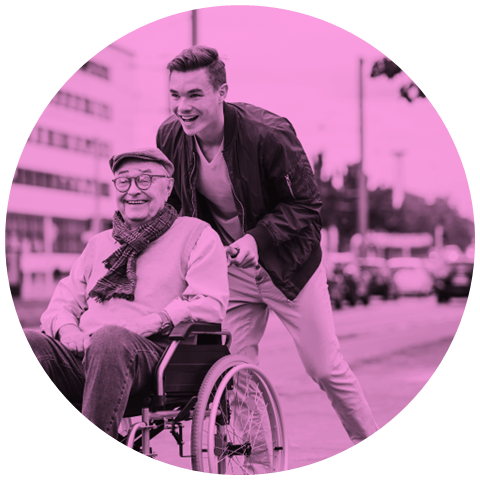
IT TAKES A VILLAGE FOR VILLAGE WORK TO THRIVE.
So we’re forming the Vertical Village Alliance.*
Health and well-being start at home. But only when we live in communities where we can receive, as well as give, care. We call a caring community a village, and are here to leverage multifamily housing to bring vertical villages—and neighbors—to life!
*We’re gathering interested parties for a launch in 2025.

We believe in-home care is a key to continued health.
6 in 10 Americans live with one or more chronic diseases, which cost trillions and can mostly be prevented through lifestyle and regular health screenings. In-home care could increase screening rates and lead to livelier people and less use of ERs for primary care.
Caring neighbors are vital for our vitality.
Loneliness is at epidemic levels in the U.S. with harmful impacts on our health and costing billions a year to address. The good news is that community care shapes our basic health more than medical care. This means that neighbors of all ages can make the best in-home caregivers.


Quality healthcare requires the people next door.
Beyond the health benefits of uniting neighbors, there are practical and economic ones too, like the power of physical proximity and resource sharing. It’s time to engage people with high caring potential and provide medical backup where they are—at or close to home.
Multifamily housing is perfect for villages.
Thriving vertical villages for all ages.
Vertical Village Alliance is about forming partnerships to develop creative village models and activities,
as well as systems to augment neighbor care with home or community-based medical care.
First, we’re looking for caring neighbors.
Next, here’s who we plan to gather to help vertical villages spread:

Home / Community Providers:
Convenient care could increase disease screening & treatment rates and less use of ERs for primary care.

Multifamily Property Owners:
Vertical villages will work best when operating in properties with the support of owners and managers.

Local Government Officials:
Vertical villages will also work best when supported by governments as well as public services and programs.

Knowledgeable Practitioners:
New kinds of tips, tools and trainings to help vertical villages thrive will require diverse points of view.
We’re gathering interested parties for a launch in 2025.

Imagine a fun, multi-story community center where people live and get care.
Hello. I’m Dr. Mary-Elizabeth Harmon, founder of Village Company 360—home of Vertical Village Alliance.
Now imagine neighbors of all ages and abilities living there and becoming more alive. You’ve just imagined what I call a vertical village. And here are just some of its potential perks:
> Uniting people.
> Connecting villagers to resources.
> Promoting healthy living.
> Reducing loneliness and social isolation across ages.
> Nurturing youth and helping older adults to live in community.
> Sparking creativity and joy!
> Providing home-based volunteer and business opportunities.
> Providing opportunities to learn and teach skills.
> Creating a culture of care and support networks for caregivers.
> Reminding us that we’re all the same and interdependent.
Want to be part of bringing all this to life?
QUESTIONS:
How do villages work?
Villages vary but generally they connect their members to each other and to services and programs, like around health. The services are limited only by our imagination, but tend to include things like transportation to medical appointments and help with chores.
Are villages safe?
People with bad intent are everywhere, even as employees of reputable care companies. Clear background checks on neighbors working with kids or inside of homes can reduce safety concerns. Otherwise, villages are no more unsafe than other community activities.
Why focus on forming villages in multifamily housing?
For three main reasons: 1) Efficiency, 2) Attainability and 3) Accessibility.
Multifamily housing has many dwellers, so they’re efficient places to unite people. It also tends to offer attainable living options for people across incomes, as well as stair-free ways that people with wheelchairs or walkers, or in strollers or on stretchers, can come and go.
How can vertical villages benefit the multifamily housing landscape?
Forward-thinking employers know that care benefits help to woo and retain workers. Caring communities in properties can help to woo and retain diverse renters, so supporting vertical villages is as much a benefit to building owners / operators as neighbors.
Are there existing vertical villages anywhere?
Yes. The Overlook at Oxon Run in D.C. and Kampung Admiralty in Singapore are two wonderful examples. But until such time that housing is built to foster vertical villages, our motto is to do the best we can with the housing stock and resources we have.
